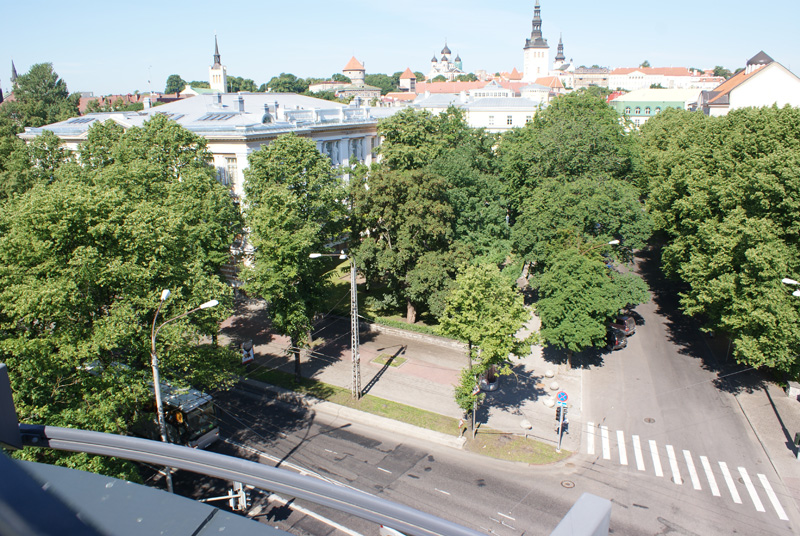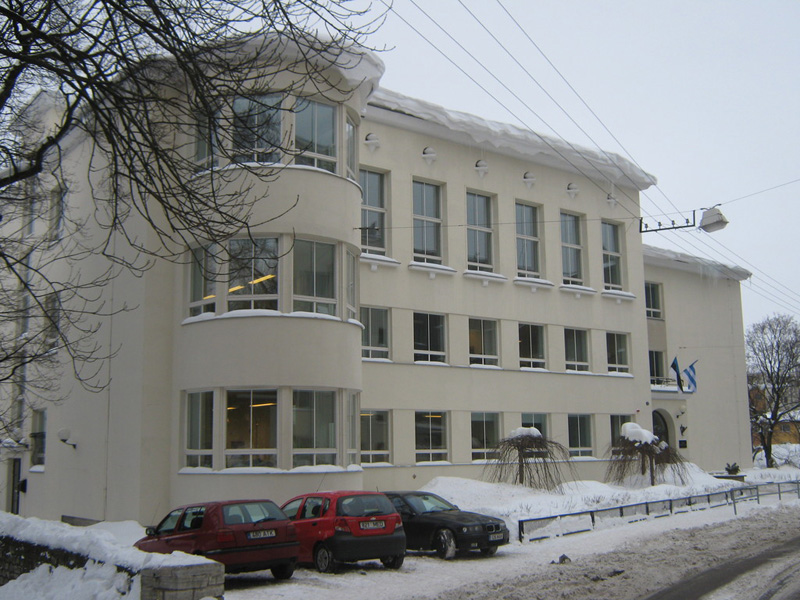
A view of Tallinn with a school roof in the left
Local Publications
The following publications used ISAAC data from the Tallinn centre:
- Riikjärv MA, Annus T, Bråbäck L, Rahu K, Björkstén B. Similar prevalence of respiratory symptoms and atopy in Estonian schoolchildren with changing life style over 4 years. Eur Respir J 2000; 16(1): 86-90.
- Annus T, Riikjärv MA, Rahu K, Björkstén B. Modest increase in seasonal allergic rhinitis and eczema over 8 years among Estonian schoolchildren. Pediatr Allergy Immunol 2005; 16(4): 315-20.
- Annus T, Montgomery SM, Riikjärv MA, Björkstén B. Atopic disorders among Estonian schoolchildren in relation to tuberculin reactivity and the age at BCG vaccination. Allergy 2004; 59(10): 1068–1073.
Tallinn Centre
| Phase OneView Centre Details | Phase TwoView Centre Details | Phase Three | |||
| Centre: | Tallinn, Estonia ( Northern and Eastern Europe ) | ||||
| Principal Investigator: | Dr Mall-Anne Riikjärv | ||||
| Age Groups: | 13-14, 6-7 | Timeframe: | April 2001 to April 2002 | ||
| Sampling Frame: | All Estonian Language schools in Tallinn | ||||
Personnel
Personnel
Dr Triine Annus

Estonian ISAAC Phase 1 - 3 investigator
pediatric allergist
Tallinn Children's Hospital Central Policlinic
Ravi 27 10138
Tallinn
Estonia
Roles:
- Phase One collaborator for Tallinn
- Phase Three collaborator for Tallinn
Dr Mall-Anne Riikjärv

Clinical Director
Tallinn Children's Hospital
Tervise, 28
Estonia
Roles:
- National Coordinator for Estonia
- Phase One Principal Investigator for Tallinn
- Phase Two Principal Investigator for Tallinn
- Phase Three Principal Investigator for Tallinn
ISAAC in Estonia (East Europa)
Estonia was a socialist country, which regained its independence in 1991. In these days Estonian pediatricians met prof. Bengt Björksten, who initiated the first epidemiological study of asthma and allergies in Estonian children. He encouraged us also to take part in the international study ISAAC, which we accepted with great enthusiasm. It was especially important for us that prof. Björksten found the resources for the study, as the economical situation in Estonia in these times was very difficult. The group of field workers was formed from pediatricians, who did the demanding field work in addition to their everyday clinical work. Such a study in schools was rather unusual, but the scool staff accepted the study group intervention into the everyday school activities rather calmly. In data processing we were pleased to receive help from an experienced statsitician, whose qualified collaboration enabled us to forward high quality data to the ISAAC center.
The positive experience from the ISAAC I encouraged us also to take part in the next phases of ISAAC. The ISAAC II study with it’s multiple tasks and procedures was rather challenging for our small group of field workers . However, we don’t remember any exceptional situations and the schoolchildren were always eager to get the reason to miss their lessons.
Participating in the ISAAC studies was an enriching experience in many ways for Estonian pediatrics. It was the first experince in the international scientific cooperation for us. Using the internationally accepted methods we got reliable data about the epidemiological situation on asthma and allergies in Estonian children. Several papers in international scientific journals and a doctoral thesis were based on the research data. We believe that the data from Estonia, a country in transition from socialism to the market economy, were a valuable addition to the international comparison. Such data gave the reason to the hypothesis that socialism protects from allergies.
We gratefully acknowledge prof. Bengt Björksten, who opened the door to the International allergy world for us and warranted the financial support for the studies. We also thank the schools and families of the participating children. Our study woudn’t have been possible without enthusiastic team of pediatricians who bore the main burden .



